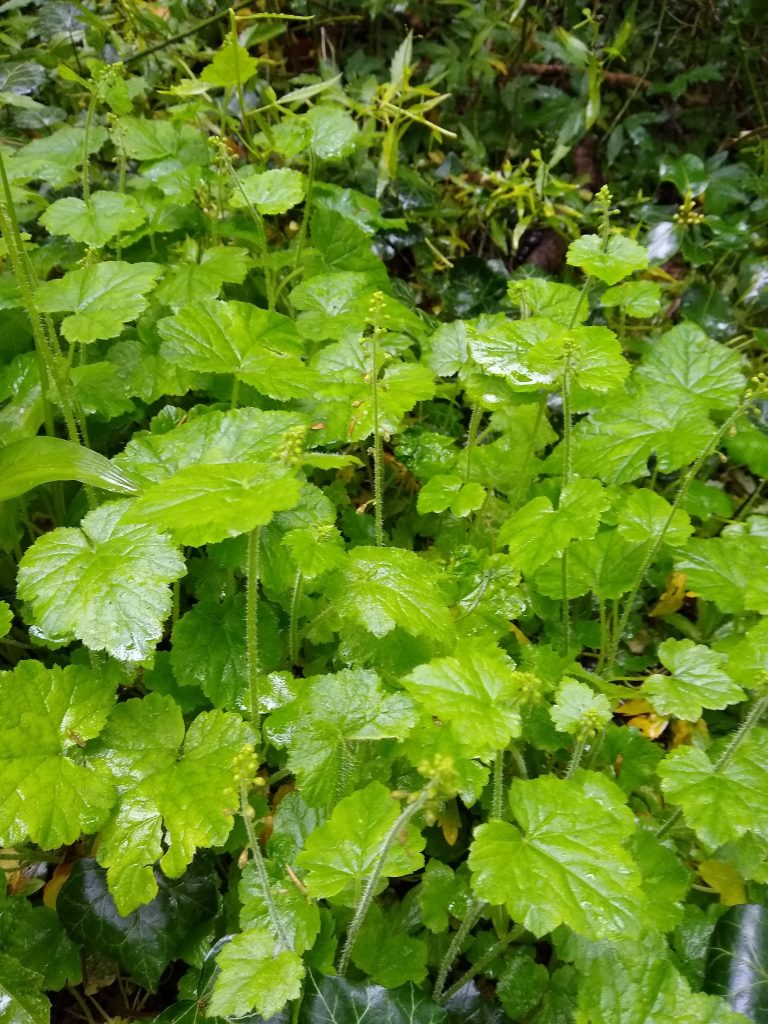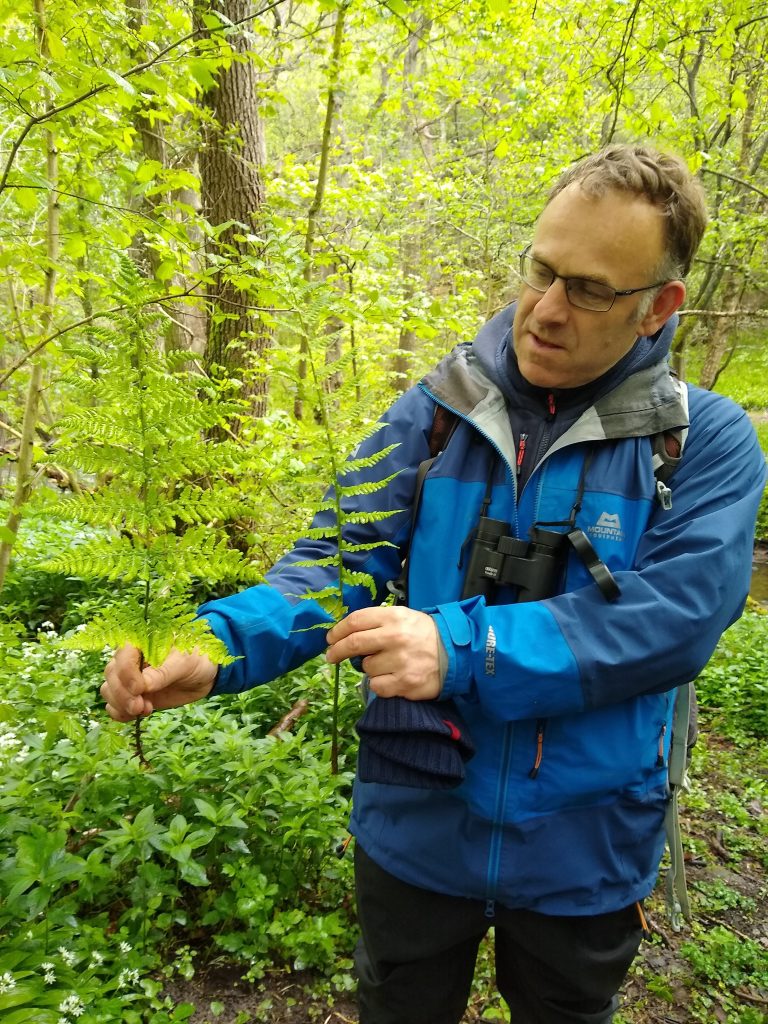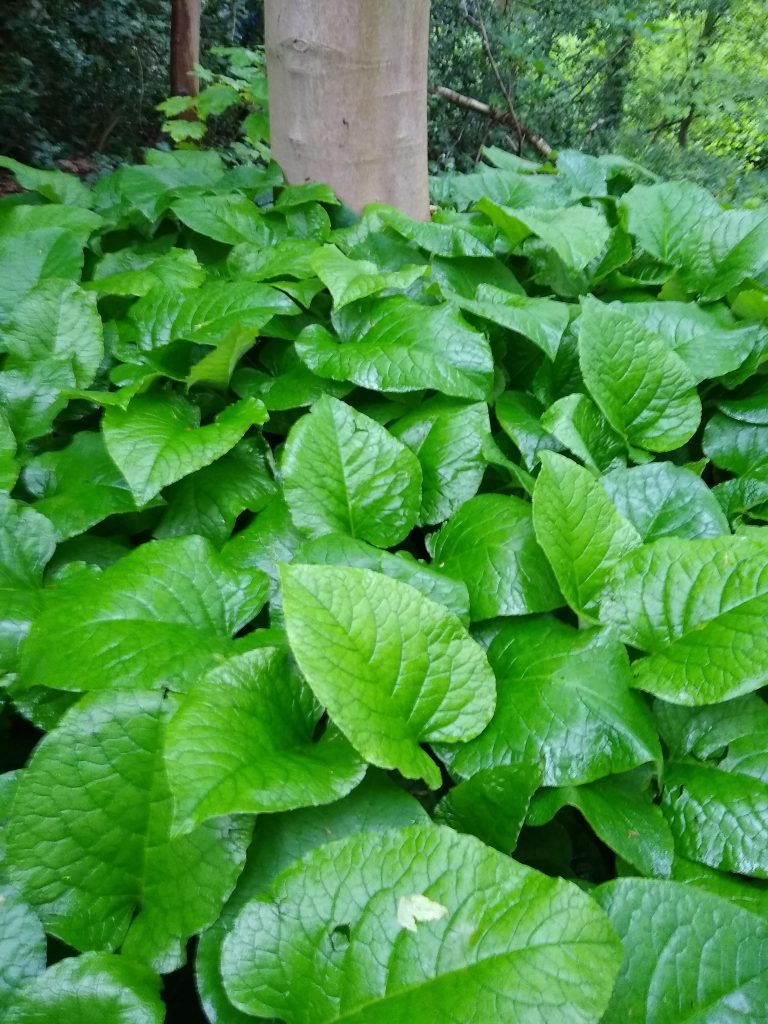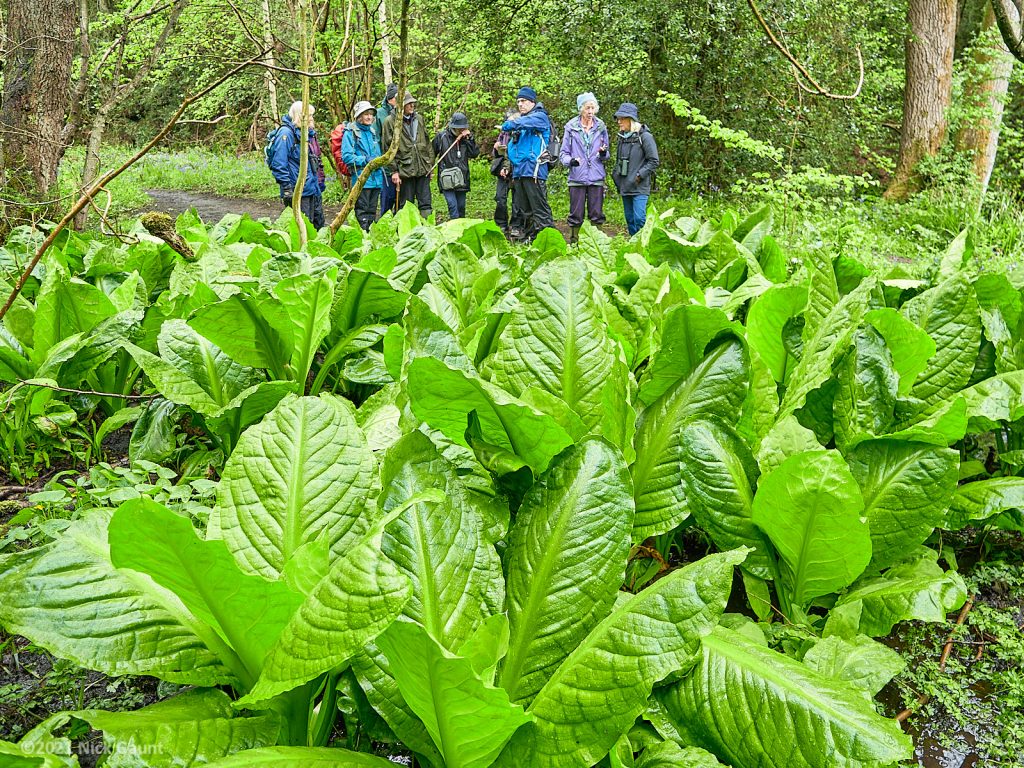It was not a particularly auspicious start to the morning as we assembled in Harlow Carr Gardens’ car park in the drizzle. Despite being nearly the end of May, the 12 intrepid members were bundled up to the eyes in double trousers, thick jackets, woolly hats, mittens and waterproofs. A warm welcome to our new member, Sue Roberts – I wonder if she realised what she had let herself in for!
Our leader Kevin Walker described the unique situation of Oak Beck, downstream from RHS Harlow Carr Gardens and its non-native plants. Here is a quotation from the RHS website:
“By not allowing plants to escape from gardens and disposing of unwanted plants and weeds carefully, gardeners can help reduce the spread of invasive non-native species.”
In fact, many alien plants have “escaped” the gardens and are carried down Oak Beck, into the River Nidd and eventually, presumably, to the Humber. Some, for example Skunk Cabbage, have already proved invasive. All of them are displacing our native species to some extent.
Before we had even entered the footpath to the beck-side, Kevin had pointed out abundant Coralroot, a typical example, whose prolific little purple ‘bulbils’ are able to propagate the plant without the need for setting seed. Shortly after passing through the gate to Oak Beck, we turned down to the stream where there was a profusion of alien species. Most striking was Abraham-Isaac-Jacob, related to borage and with similar hairy leaves but, as is often the case with these aliens, much bigger. There was also the Pick-a-back plant, so called because it bears tiny plantlets on its leaves, again a strategy for effective propagation. There were Fringecups, Broadleaved Cuckoo-flower, Aconite-leaved Buttercup, Caucasian Pennycress, a species of bamboo – in fact a veritable world tour. Even the Ivy was Persian!
We proceeded downstream, now encountering a profusion of native species of wet woodland. It was beautiful under the young green of the beech trees, with the stream running quite high and the banks clothed with graceful Greater Woodrush, Pendulous Sedge in full flower, and little banks of Opposite-leaved Golden Saxifrage. Amidst these subtle colours a startling patch of Purple Toothwort – another foreigner – was conspicuous. Soon also we found the notorious Skunk Cabbage, a huge patch of giant leaves, already nearly waist high but destined to double in size over the summer.
Next we were scrambling up and down a rocky hillside amid small trees and moss-clothed boulders. Kevin showed us how to distinguish Broad Buckler-fern, Male Fern and Lady Fern. It was gratifying to see healthy Wych Elm trees although later an older tree was clearly diseased. When we returned to the valley floor, the gorge had widened and flattened and there was a sea of snow-white Ramsons, Wood Stitchwort and Bluebells. Sanicle and Wood Sorrel were sprinkled among them. Meanwhile, Nick was unobtrusively inspecting mosses in this bryologist’s heaven, and some brave members attempted to identify a few grasses – Wood Melick, Creeping Soft-grass and Giant Fescue were among the more distinctive ones.
The path petered out, necessitating a stream crossing which is normally possible dry-shod, but needed some sacrifice by those of us without Wellingtons… it led us to a wonderful swampy area of standing water, tussocks, upwelling springs and trees draped in moss, altogether a green and jungly atmosphere. Kevin discovered an area of tufa which is formed by water saturated with calcium carbonate – showing the presence of limestone. Oak Beck’s rich flora is linked to the varied substrata with both limestone and the gritstone of the crag with its Heather and Bilberry. Marsh Hawk’s-beard and Skullcap were to be found here, and Kevin spotted from a distance that what appeared to us an anonymous-looking clump was the Greater Tussock-sedge, a rare species whose large tussocks are supposed to have inspired John Wyndham’s Triffid fantasy. We observed a dipper as we crossed the footbridge and finally ascended the steep gritstone crag, catching glimpses of more distant countryside. This brought us to level ground and the track back to the start.
A wonderful morning with the plants, never a moment when there wasn’t something to see. Many thanks to Kevin, we all learnt such a lot.
Muff Upsall
Pick-a-back plant Kevin Walker showing the difference between Male and Broad Buckler Fern Abraham-Isaac-Jacob Skunk Cabbage




